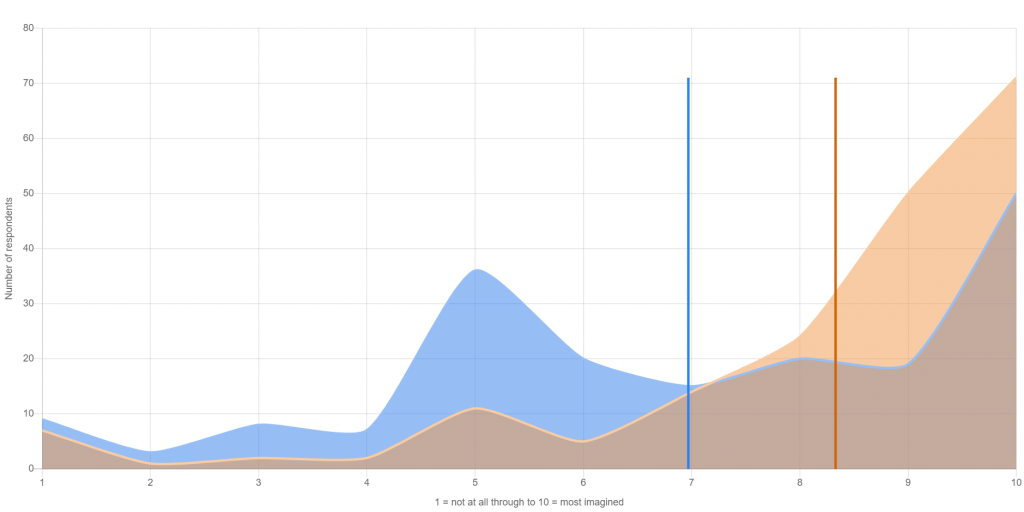Objective: Social connectedness to be enhanced
Outcome: Social connectedness is enhanced
Measure: Social connectedness enhanced
Short description
By ‘social connectedness’ we mean bonds between people who share common characteristics or interests. These could be family, friends, neighbours or like-minded people.
Full description and underpinning theory
Full description
This outcome is about how engagement in cultural activity can strengthen social cohesion with people like us, people who have a sense of common identity – such as family, close friends and people who share our culture or ethnicity. This might include relationships with immediate family, close friends and neighbours, and potentially including other participants (creative, active and receptive) through helping strengthen mutually satisfying relationships and a sense of a positive connection. An example might be relationship strengthened between a child and a parent through a joint contribution to a school talent quest. This type of social connectedness is often referred to as bonding social capital.
Theory underpinning this outcome
Psychologists have identified social connection as a basic human need that is fundamental for human development (Inagaki 2014). Some research has suggested that having the sense of social connection may be as important to human well-being as receiving help and support from others (Cacioppo, Hawkley & Thisted. 2010) One study found that strong social relationships was a common characteristic of very happy people Diener & Seligman. 2002). The perception of similarity with others is linked to a positive feeling and sense of belonging with other people (Seppala, Rossomando & Doty. 2013). Positive social relationships are important for social wellbeing and overall quality of life and can mitigate anxiety (Kimweli & Stilwell. 2002)
Evidence that this outcome occurs
Young people who engaged in extra curricular activities were 2.3 times more likely to form friendships than those who did not. Significantly, this was more likely to occur when activities were arts based rather than sports. (Schaefer, Simpkins, Vest & Price. 2011).
(This section is in development and updates will be posted here as they are completed)
Activities contributing to this outcome
Activities
As of April 2021, there were 51 activities in Takso selecting this outcome with 14 completed and evaluated. Types of activities undertaken to achieve this outcome include:
- Artists’ residencies and studio programs,
- Commissioning of public art (not acquired),
- Conferences, lectures, seminars and public talks,
- Creative community,
- Creative recreational,
- Exhibitions: of arts and objects in all forms,
- Gathering, celebration or ceremony,
- Performances: performing arts of all forms.
Results
Over the 14 completed activities that addressed this outcome, 940 people responded to the evaluation question. On a scale of 1 to 10, with 1 being not at all and 10 the most imaginable, respondents reported an average attainment of 7.5 for this outcome.
Social connectedness enhanced
14 activities / 271 responses / Pre activity average 6.95 / Post activity average 8.3

Evaluation measure
Social connection between people with a common identity
References
Diener, E., & Seligman, M. (2002). Very Happy People. Psychological Science, 13(1), 81-84.
Inagaki, T. K. (2014) Neurobiological Bases of Social Connection. UCLA. ProQuest ID: Inagaki_ucla_0031D_12468. Merritt ID:ark:/13030/m514gcm. Retrieved from http://escholarship.org/uc/item/6fc2g8ss
Kimweli, D., & Stilwell, M. (2002). Community Subjective Well-being, Personality Traits and Quality of Life Therapy. Social Indicators Research, 60(1), 193-225.
Seppala, E., Rossomando, T., & Doty, J. (2013). Social Connection and Compassion: Important Predictors of Health and Well-Being. Social Research,80(2), 411-430.
(This section is in development and updates will be posted here as they are completed)

